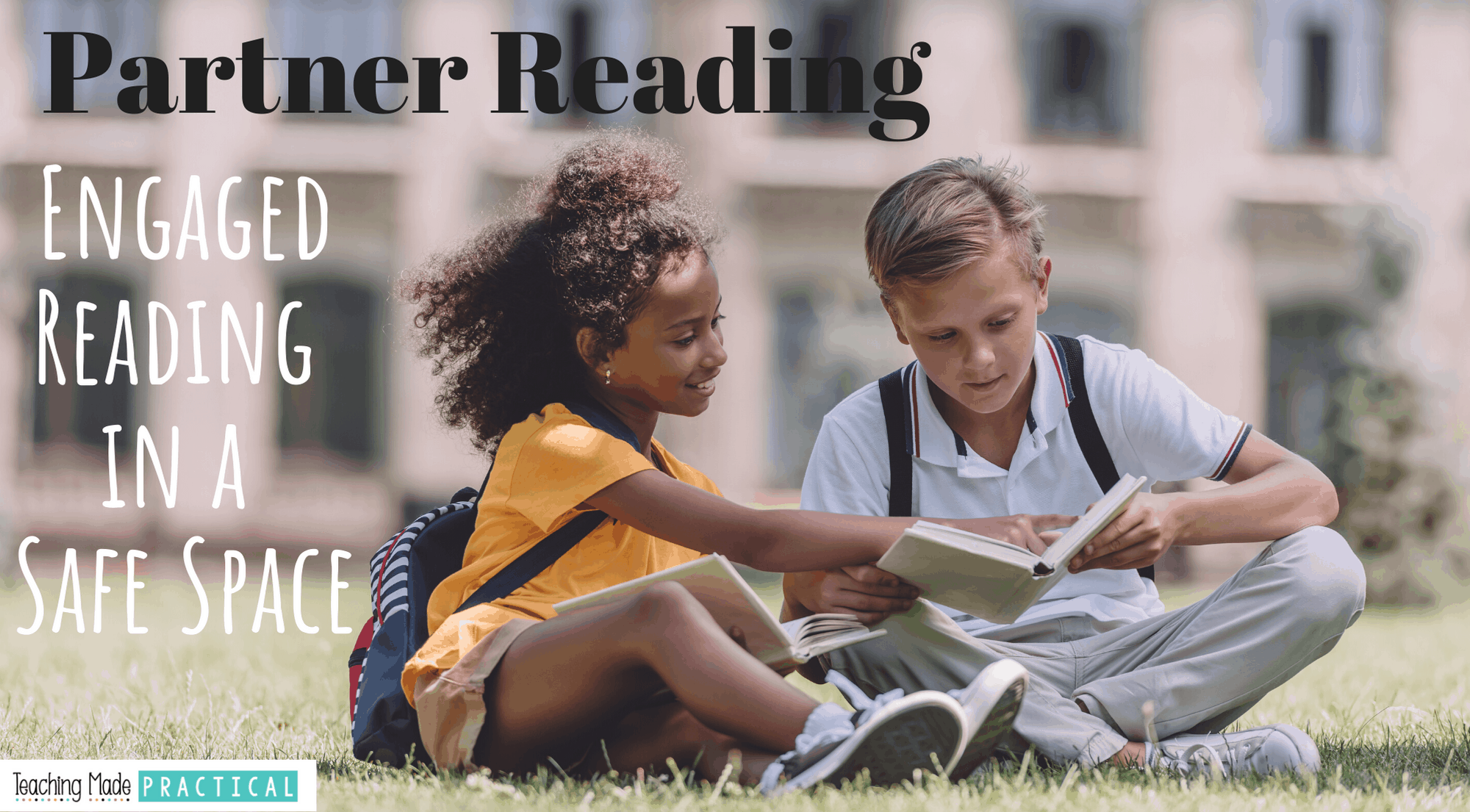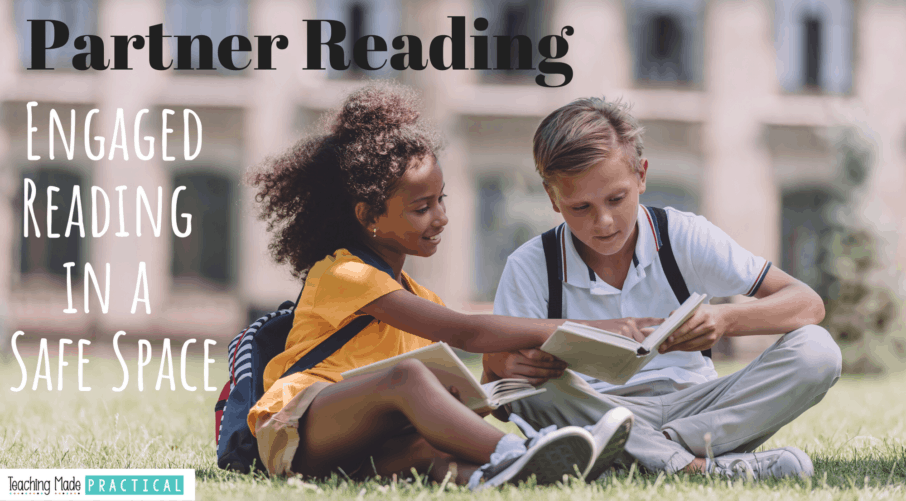
Why Should I Use Partner Reading in My Upper Elementary Classroom?
Partner reading (also known as paired reading) is a reading strategy where two students are paired together and read a given text aloud to each other. Often, students are paired strategically. For example, teachers could pair readers that are on the same level, or pair a more fluent reader with a less fluent reader.
There are many advantages to using this in a 3rd, 4th, or 5th grade classroom, including:
- Students get to practice reading aloud in a safe, low risk environment while still having some accountability.
- It allows 50% of your class to be reading aloud at the same time, and the other 50% to be listening, for 100% student engagement.
- It builds both reading fluency and comprehension in students. (Check out this free, no prep activity for fluency practice.)
- Students have a support in place if they are struggling with a word or don't understand the text.
- It frees you as the teacher up so you can observe, teach a small group, deal with a behavior problem, etc.
- Students get to interact with other students about a text.
- It's an engaging way to have students reread a text.
- This is one of the easy ways to change up your reading routine and get students re-engaged.
Partner reading is just one of many classroom procedures that you need a plan for. This free procedure checklist will help you plan for others!
Fun, No Prep Halloween ELA Activities! Includes:
- Halloween Fun Packet
- History of Halloween Reading Passage
- Monster Descriptive Writing Activity
- Spooky Figurative Language
- Bats Reading Comprehension and Snowball Fight
How Should I Set up Partner Reading / Paired Reading Procedures?
Most upper elementary teachers know that simply pairing up students and then setting them free will likely lead to off task behavior. Having procedures in place is essential in order to prevent behavior problems, minimize interruptions, and keep students on task.
As you are setting up procedures, be sure to think about:
1. How Students Will Sit As They Partner Read
Do you want your students in desks, sitting shoulder to shoulder? Do you want them on the ground, sitting across from each other? Do you want students to share a book, or to each have their own? Is it ok if students lie on the ground as they read?
Any of these options are ok, but if you have a particular way you would like students to sit, then make sure you are clear about that.
I usually started the year with students sitting at desks, side by side. When students proved to me that they were staying on task and following directions, then I allowed them to choose their own spot in the room and sit however they wanted.
2. How Students Will Read
How much do you want students to read before switching to the other person? Do you want them to switch after every sentence? After every paragraph? After every page?
There are advantages and disadvantages to all of these. Switching after each sentence requires students to pay closer attention. It's easy for the listening student to drift off if they are having to listen to a slower reader read an entire page.
However, switching every sentence leads to more choppiness and less comprehension. Paragraphs are a better length, but can lead to some confusion, especially if there is a lot of dialogue or really short paragraphs.
Whatever you decide, explain it clearly to students to prevent arguments.
3. How Students Will Correct Each Other
How do you want students to help each other when they come to a word they don't know, or when they read a word incorrectly?
You will probably have some over-eager helpers in your classroom that need some direction about how much correcting they can do. You could ask your students only to help their partner if they ask for help. You could also provide some questions for students to ask their partner to help them figure out the word themselves.
After deciding on your expectations, be sure and model them to students.
Things to Consider as You Think About Using This Strategy In Your Classroom
There are several other things for you to consider as you have your class partner read.
Most likely, you won't be able to pair up every single one of your students perfectly. Consider your outliers - your very high readers and very low readers - most carefully. They are the most likely to get frustrated with a poor pairing, leading to preventable behavior problems. Adapt your procedures if necessary.
For example, you could have your struggling readers read less than their partners; they could read 1 sentence while their partner reads 1 paragraph.
Another thing to consider is how you will keep students accountable. Monitoring students periodically is the easiest way to make sure students are staying on task. You could also have students complete comprehension questions together after reading the text. A rubric to help students self assess their own behavior can also be helpful and eye opening.
Partner reading is going to look different in every 3rd, 4th, and 5th grade classroom. Regardless of how you set it up in your classroom, students will be engaged!
Check out these other tips on managing your 3rd, 4th, 5th grade classroom.
Never Stress Over Sub Plans Again!

Make copies, find a fiction book, and you'll be ready for any emergency that comes your way!


